Volume 35, Issue 3
Displaying 51-78 of 78 articles from this issue
Degenrative diseases
-
2011 Volume 35 Issue 3 Pages 919-921
Published: 2011
Released on J-STAGE: December 21, 2011
Download PDF (299K) -
2011 Volume 35 Issue 3 Pages 923-926
Published: 2011
Released on J-STAGE: December 21, 2011
Download PDF (365K)
Inflammatory disease
-
2011 Volume 35 Issue 3 Pages 927-930
Published: 2011
Released on J-STAGE: December 21, 2011
Download PDF (350K) -
2011 Volume 35 Issue 3 Pages 931-934
Published: 2011
Released on J-STAGE: December 21, 2011
Download PDF (549K)
Miscellaneous lesions of the shoulder
-
2011 Volume 35 Issue 3 Pages 935-938
Published: 2011
Released on J-STAGE: December 21, 2011
Download PDF (448K) -
2011 Volume 35 Issue 3 Pages 939-943
Published: 2011
Released on J-STAGE: December 21, 2011
Download PDF (615K) -
2011 Volume 35 Issue 3 Pages 945-948
Published: 2011
Released on J-STAGE: December 21, 2011
Download PDF (348K) -
2011 Volume 35 Issue 3 Pages 949-952
Published: 2011
Released on J-STAGE: December 21, 2011
Download PDF (366K) -
2011 Volume 35 Issue 3 Pages 953-956
Published: 2011
Released on J-STAGE: December 21, 2011
Download PDF (423K) -
2011 Volume 35 Issue 3 Pages 957-960
Published: 2011
Released on J-STAGE: December 21, 2011
Download PDF (451K) -
2011 Volume 35 Issue 3 Pages 961-963
Published: 2011
Released on J-STAGE: December 21, 2011
Download PDF (281K) -
2011 Volume 35 Issue 3 Pages 965-969
Published: 2011
Released on J-STAGE: December 21, 2011
Download PDF (392K) -
2011 Volume 35 Issue 3 Pages 971-974
Published: 2011
Released on J-STAGE: December 21, 2011
Download PDF (515K) -
2011 Volume 35 Issue 3 Pages 975-978
Published: 2011
Released on J-STAGE: December 21, 2011
Download PDF (391K) -
2011 Volume 35 Issue 3 Pages 979-981
Published: 2011
Released on J-STAGE: December 21, 2011
Download PDF (322K) -
2011 Volume 35 Issue 3 Pages 983-986
Published: 2011
Released on J-STAGE: December 21, 2011
Download PDF (383K)
Treatment
-
2011 Volume 35 Issue 3 Pages 987-990
Published: 2011
Released on J-STAGE: December 21, 2011
Download PDF (410K) -
2011 Volume 35 Issue 3 Pages 991-993
Published: 2011
Released on J-STAGE: December 21, 2011
Download PDF (346K) -
2011 Volume 35 Issue 3 Pages 995-1000
Published: 2011
Released on J-STAGE: December 21, 2011
Download PDF (1172K)
Case reports
-
2011 Volume 35 Issue 3 Pages 1001-1003
Published: 2011
Released on J-STAGE: December 21, 2011
Download PDF (315K) -
2011 Volume 35 Issue 3 Pages 1005-1007
Published: 2011
Released on J-STAGE: December 21, 2011
Download PDF (321K) -
2011 Volume 35 Issue 3 Pages 1009-1012
Published: 2011
Released on J-STAGE: December 21, 2011
Download PDF (452K) -
2011 Volume 35 Issue 3 Pages 1013-1016
Published: 2011
Released on J-STAGE: December 21, 2011
Download PDF (375K) -
2011 Volume 35 Issue 3 Pages 1017-1020
Published: 2011
Released on J-STAGE: December 21, 2011
Download PDF (516K) -
2011 Volume 35 Issue 3 Pages 1021-1023
Published: 2011
Released on J-STAGE: December 21, 2011
Download PDF (242K) -
2011 Volume 35 Issue 3 Pages 1025-1028
Published: 2011
Released on J-STAGE: December 21, 2011
Download PDF (473K) -
2011 Volume 35 Issue 3 Pages 1029-1032
Published: 2011
Released on J-STAGE: December 21, 2011
Download PDF (419K) -
2011 Volume 35 Issue 3 Pages 1033-1036
Published: 2011
Released on J-STAGE: December 21, 2011
Download PDF (412K)
